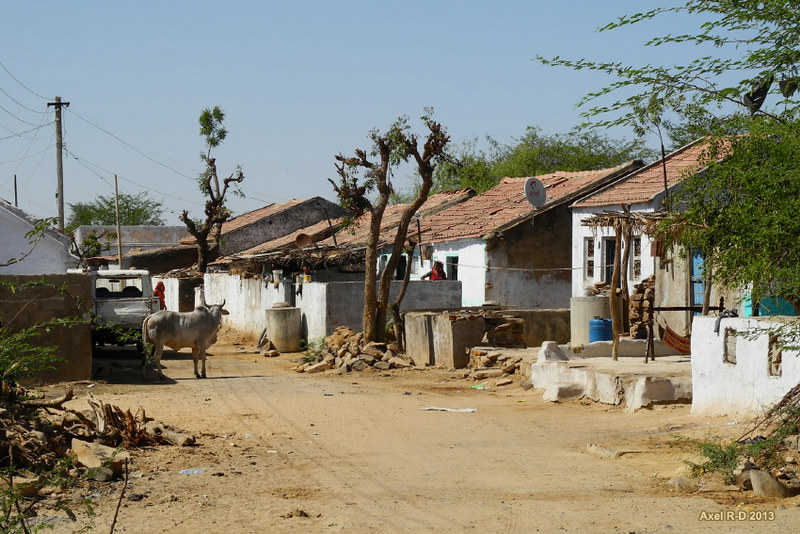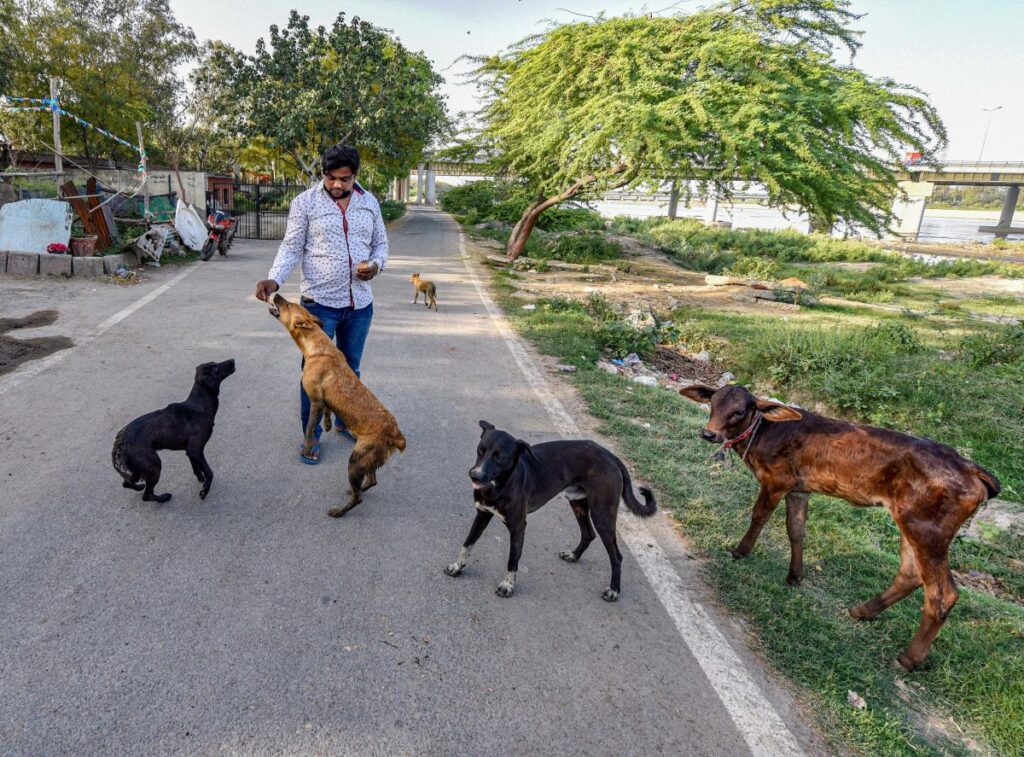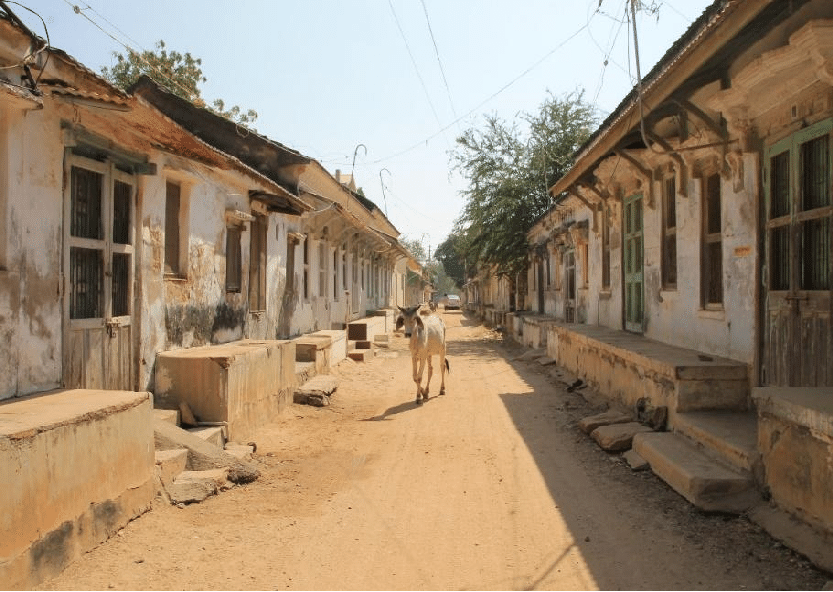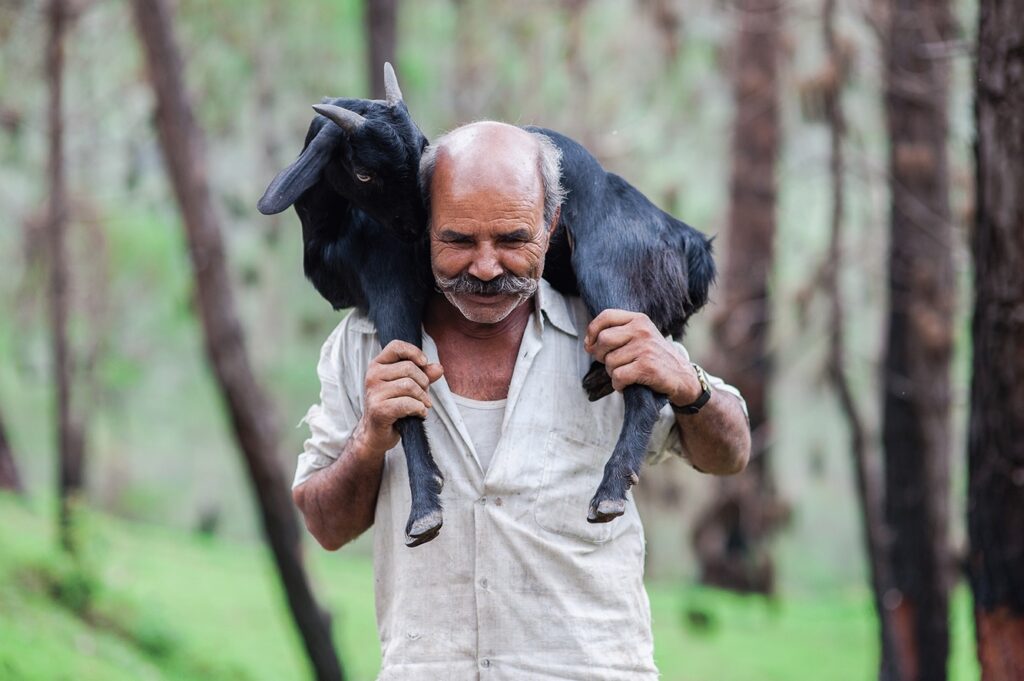
સોશિયલ મીડિયામાં પાલતુ પ્રાણીઓને લઈને પ્રેમ ઉતરોત્તર વધી રહ્યો છે. જો કે આ પ્રેમનું મુખ્ય કારણ શું છે?એકલતા,માનવતા કે પછી સોશિયલ મીડિયામાં ફેમસ થવાનો મોહ. પણ તોય જ્યારે ભારતના બુદ્ધિજીવીઓને પાલતુ પ્રાણીઓને લઈને સોશિયલમાં જ્ઞાન આપતા જોઉ ત્યારે થાય કે જેમ ભગવાન બુદ્ધને બોધિગયાંમાં જ્ઞાન પ્રાપ્ત થયું હતું હતું એવીજ રીતે પેટ અને શોખ ભરાયા પછીનું જ્ઞાન પ્રાપ્ત આ બુદ્ધિજીવીઓને થયું લાગે છે.કારણ કે આ જે જ્ઞાન પીરસાઈ રહ્યું છે એ તો કોઈ ગામડાના બાળકને ગલથૂથીથી જ મળતું હોય છે. ગામડાનો માણસ હંમેશા પાલતુ પ્રાણીઓથી જોડે ઘરોબો રાખતો આવ્યો છે.પ્રાણીઓ અને મનુષ્યનું સંતુલન ક્યાંય જોવું હોય તો એ ગામડામાં આબેહૂબ જોવા મળે છે.કદાચ શહેરોમાં તો હવે #Adoptpet કે પછી #SavePets જેવા ટ્રેન્ડ ચાલુ થયાં હશે પરંતુ ગામડામાં તો પાલતુ પ્રાણીઓ વર્ષોથી પરિવારનો હિસ્સો જ રહ્યા છે.
આજકાલ અમુક પ્રોફેશનલ લોકો રીતસરની પાલતુ કુતરાઓ માટે મુહિમ ચલાવતા જોવા મળે છે.ક્યાંક કોઈ શ્વાન સાથેના અત્યાચારનો વિડીયો વાયરલ થયો હોય તો જાણે કોઈ પોતાનું ગૂજરી ગયું હોય એવું દુઃખ વ્યક્ત કરતાં જોવા મળે છે.જો કે એ અલગ વાત છે કે એમનો આ પ્રાણીપ્રેમ પણ ભેદભાવયુક્ત હોય છે જે કોઈક ચોક્કસ જાતના પ્રાણી કે પછી ચોક્કસ નસ્લના પ્રાણીઓ માટેજ દેખાય છે.પરંતુ તેમ છતાંય એમનું આ દુઃખ ઠીક છે,કારણ કે માણસને પ્રાણીઓ સાથે અત્યાચાર કરવાનો કોઈ જ અધિકાર નથી.મહાભારતમાં ભગવાન કૃષ્ણએ પણ કહ્યું છે કે જે જીવ તમે નથી બનાવ્યો એનો નાશ કરવાનો પણ તમને કોઈ અધિકાર નથી.

જ્યારે ગામડામાં નજર નાખીએ ત્યારે આ મુહિમો એક્ જીવનપધ્ધતિનો ભાગ દેખાય છે. મોટાભાગના ગામડાંઓમાં એક રિવાજ ખૂબ પ્રચલિત હોય છે કે પહેલી રોટલી ગાય માટે અને છેલ્લી રોટલી કૂતરાં માટે બનાવવાની,હવે આ પહેલા અને છેલ્લાંના ભેદભાવમાં પડ્યા વગર જોઈએ તો ગામડાની આ પદ્ધતિ મુજબ દરેક પરિવાર રોજ બે ટંક બે રોટલી બે પાલતું પ્રાણીઓ માટે બનાવે છે. અને શેરીના કુતરાઓનું ભરણપોષણ દરેક ઘર કોઈપણ જાતની મુહિમ કે ટ્રેન્ડ ચલાવ્યા વગર કરી જાણે છે.હકીકતે આ રીત એ વેલ્ફેર સ્ટેટના સંદર્ભે જોઈએ તો પણ સંપન્ન પરિવારો ગરીબોની મદદ કરીને એક સમરસ બનાવતા હોય એવું ઉદાહરણ પૂરું પાડે છે.ગામડિયાઓનો આ પ્રેમ માત્ર અન્ન પૂરતો ન રહેતા કેટલાક અંશે પારિવારિક પણ જોવા મળે છે. ગામડાની કોઈ શેરીમાં જ્યારે કોઈ કૂતરીને નાના નાના ગલુડિયા જન્મે એ વખતે જાણે શેરીમાં અમીર શેઠને ત્યાં કુમાર જન્મ્યો હોય અને માહોલ હોય એવો માહોલ હોય છે. એ વખતે એ શેરીના લોકો કે જે કૂતરાઓને તગડતા રહેતા અને ક્યારેક કોઈક એન એઠું કર્યું હોય કે ચોખ્ખા વાસણ ચાટવાના આરોપસર છૂટ્ટા પાણાઓનો ઘા કરતાં,એમના હૃદયમાં પણ એ માં બનેલ કુતરી માટે ગજબનો સ્નેહ જોવા મળતો હોય છે. કેટલીય શેરીઓમાં નાના બાળકો નાના ગલુડિયા જોડે બાળ સખા બનીને રમતા હોય છે અને ક્યારેક નાતજાતના ભેદને ધ્યાને રાખ્યા વગર સાથે જમતાં પણ હોય છે.હવે એ બાળકોના બાળ સંસ્કારમાં જ એ વસ્તુ જોવા મળે છે કે એ મોટાઓને જોઈને શીખે છે એ ખબર નથી પરંતુ મોટા શહેરોમાં જ્યાં રહેવા માટે ઓટલો નથી મળતો ત્યાં આવા ગલૂડિયાઓ માટે બાળકો શિયાળામાં ઓથાર બનાવતા જોવા મળશે. હવે આ જ બાળકો એ નવા જન્મેલ ગલુડિયાનું નામકરણ પણ કરશે. આ કૂતરાઓ સાથેના પ્રેમનું આબેહૂબ વર્ણન પન્નાલાલ પટેલની કૃતિ ‘કાશીમાંની કુતરી’ વાર્તામાં જોવા મળે છે.

આ તો વાત બાળકોની થઈ, પણ ગામડાના કામ કરતાં લોકો પણ પાલતુ પ્રાણીઓ પ્રત્યેનો પ્રેમ કઈ ઓછો અંકાય એમ નથી.ગામડાના જેટલા પણ ખેડૂતો છે એમના દરેકના ખેતરમાં એમના પાળેલા કાળીયો અને ટીલીઓ ફરજિયાત પણે જોવા મળે છે અને ખેડૂત જ્યારે ખેતરમાં રાત્રે ચોકીદારી(ઉત્તર ગુજરાતની ભાષામાં ‘વાહુ’) માટે જાય ત્યારે એકાદ વાર એમની ચલમ ભૂલી જઈ શકે પરંતુ ખેતરના કૂતરાઓ માટે રોટલા લઈ જવાનો નહીં ભૂલે. અરે! કેટલાય ઘરોમાં મહિલાઓએ ભૂલથી ખેતરના કૂતરાઓ માટેના રોટલા એઠવાડમાં નાખી દીધા હોય તો એ ઘરોમાં ગૃહયુધ્ધ સર્જાતા મેં પોતે જોયેલા છે. શહેરોમાં મોટા ભાગનાં પરિવાર જમી રહે પછી વધેલો ખોરાક ગટરમાં કે પછી કચરાપેટીમાં નાખી દેવાનો રિવાજ છે, પરંતુ ગામડાઓમાં થયેલ એઠવાડનો આવિષ્કાર કૂતરાઓ અને રખડતા પશુઓ માટે સદાવ્રત સમાન છે. એઠવાડથી યાદ આવ્યું કે શહેરમાં પાળેલા શ્વાન માટેના અલગ પ્રકારના ખોરાકના શો-રૂમ હોય છે.આથી જો એઠવાડ નામથી ઘણા લોકોને આ નકામો ખોરાક લાગી શકે છે. પરંતુ આ એઠવાડમાં એ જ ખોરાક હોય છે જે કોઈપણ પરિવાર એ જમી અને વધ્યો હોય એ નાખેલ હોય માટે એની ગુણવત્તા ઉપર શંકા કરવી નકામી રહેશે.
વાત માત્ર શ્વાનની નથી પરંતુ દરેક પશુપાલકને ત્યાં પણ ગાય કે ભેંસને હંમેશા પરિવારનો દરજ્જો જ મળતો હોય છે. કેટલીએ ભેંસો એવી હોય છે કે જે એના માલિક વગર દોહવા ન આપતી હોય અને એ કિસ્સાઓમાં ગમે તેવી મહેમાનગતિએ ગયેલ પશુપાલક ઘરે પડેલ દાગીના કે ધન કરતાં એના પશુધનની વધારે ચિંતા કરતો જોવા મળશે. ક્યાંક જો કોઈનું ઢોર ખોવાઈ જાય તો એના માલિકને એ ન મળે ત્યાં સુધી ઉપવાસ કરતા મેં નરી આંખે જોયેલા છે અને કોઈ પશુનું અકાળે મૃત્યુ થાય ત્યારે એના માલિકને ચૌધાર આંસુએ જાણે કોઈ પોતાનું સ્વજન ગુજરી ગયું હોય એવી રીતે રડતા જોયા છે. વાત માત્ર ગાય કે ભેંસ નથી ઘેટા કે બકરા કરાવતા ગોવાળો જ્યારે કોઈ બકરું ચાલી શકવાની હાલતમાં ન હોય કે પછી નાની વયનું હોય તો એને ખભા ઉપર નાખીને ચાલતા અનેક દ્રશ્યો તમને ગામડામાં જોવા મળશે.

આ તો વાત માત્ર પાલતુ પ્રાણીઓની કરી પણ ગીરના માલધારીઓની સાવજ જોડે ની ભાઈબંધી જગ જાહેર છે. કેટલાય સાહિત્યકારોના પુસ્તકમાં આ માલધારીઓ અને સાવજોની એકબીજા પ્રત્યે રાખેલી અમન્યાના દાખલાઓ જડે છે. લગભગ મોટાભાગના ગામડાઓમાં બિલાડી અને સાપને દૂધપાવવાના રિવાજ પણ રહેલા છે. જૂની પંચાયતની સામાજિક વ્યવસ્થામાં કોઈ વ્યક્તિ અપરાધ કરે તો એની સજામાં પણ પ્રાણીઓનું હિત સચવાય એવા નિર્ણયો ગામડાઓમાં જગજાહેર છે. જેમ કે જો કોઈ વ્યક્તિ સમાજનો કોઈ નિયમ તોડે તો એનો જે દંડ હોય છે એ ઢોરઢ માટે ઘાસચારો કે પછી પંખીઓ માટેનો દાણા હોય છે. તહેવારોમાં પણ ભારતીય સંસ્કૃતિ પ્રાણીઓનો ખાસ ખ્યાલ જોવા મળે છે. ઉતરાયણમાં મોટાભાગના શહેરોમાં પતંગો અને ડીજે ની મસ્તી ચાલતી હોય એ વખતે આખા ગામમાં ઉઘરાણુ થઈને ગામના કૂતરાઓ તેમજ અન્ય પશુઓ માટે લાડુ બનાવવાની પ્રથા ખૂબ જૂની છે. એ સિવાય કોઈના ઘરે લીમડો કાપવાનો હોય તો ગામમાં જે વ્યક્તિને ત્યાં ઊંટ હોય તેને બોલાવી કે કાપેલો લીમડો એને ખોરાક માટે થઈને અપાતો જોવા મળે છે. જોકે આજકાલ બળદ નામશેષ થઈ ગયા છે પરંતુ જ્યાં જ્યાં પણ ખેતીમાં બળદ વપરાય છે એ દરેક જગ્યાએ બળદની પૂજા થતી જોવા મળે છે.
તેમ છતાં ગામડાના લોકોને ક્યારેય કોઈ ટ્રેન્ડ ચલાવતા કે પછી હેશટેગ મૂકીને સ્ટોરી રાખતા નથી જોયા કારણ કે આજકાલ જે સોશિયલ મીડિયામાં સ્ટોરી કે પછી સ્ટેટસમાં દેખાય છે વર્ષોથી ગામડાની રીત રિવાજ અને જીવન શૈલીમાં મૂળ રીતે વણાયેલું છે. ભારતીય સમાજ ઐતિહાસિક રીતે પાલતુ અને જંગલી પશુઓ સાથે સમન્વય સાધીને રહેતો જોવા મળે છે.
આ લેખ મહેશ રાજગોર દ્વારા લખવામાં આવેલ છે,જેનો સંપૂર્ણ અધિકાર લેખકનો રહેશે.